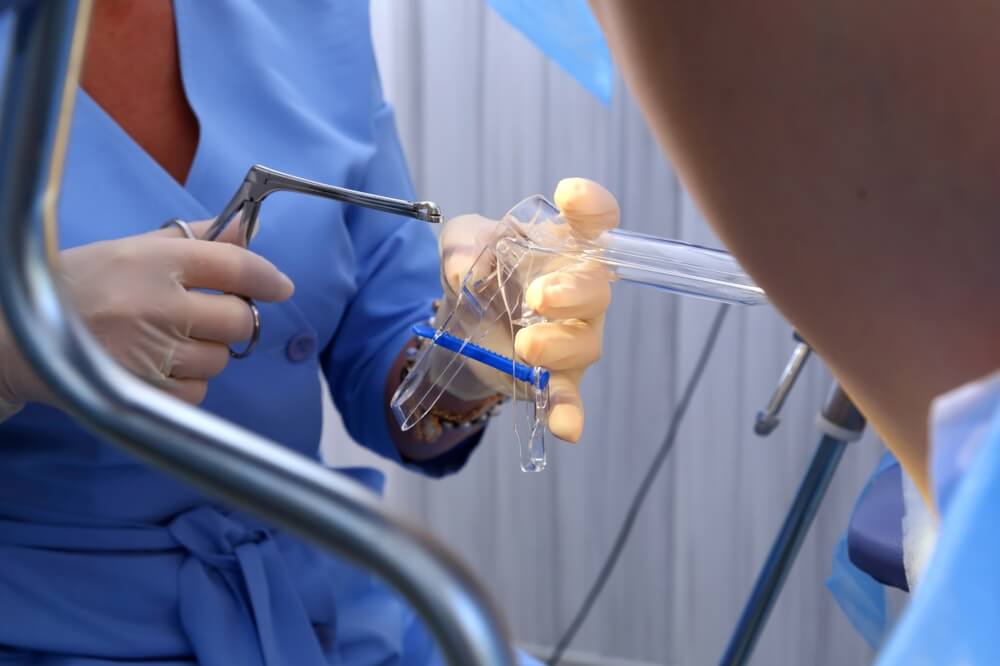Cervical dysplasia is a term that often sparks concern among women, yet understanding it can alleviate fears and empower proactive health decisions. In this article, we will delve deep into what is cervical dysplasia, cervical dysplasia stages, implications, and dysplasia treatment options.
Whether seeking routine check-ups, family planning assistance, prenatal care, or specialized treatments for gynecological conditions, patients can expect compassionate care delivered by experienced professionals. Obstetrics and Gynecology In South Miami, Florida is equipped with advanced technology, ensuring patients receive the highest quality of care. By choosing the services of this medical center in South Miami, women can prioritize their health and well-being with confidence, knowing they are in capable hands within a welcoming and supportive environment.
What is Cervical Dysplasia?
Cervical dysplasia is a term used to describe abnormal changes in the cells of the cervix, which is the lower part of the uterus that connects to the vagina. These changes are typically detected during a routine Pap smear or HPV test. While cervical dysplasia itself is not cancer, it is considered a precancerous condition because it can progress to cervical cancer if left untreated.
Cervical dysplasia is often categorized into mild, moderate, or severe stages based on the extent of abnormal cell growth. It is most commonly caused by certain strains of the human papillomavirus (HPV), a sexually transmitted infection. Although cervical dysplasia may not present with noticeable symptoms, regular screenings and prompt treatment are essential for preventing the progression to cervical cancer. Treatment options vary depending on the severity of the dysplasia and may include procedures such as cryotherapy, laser therapy, loop electrosurgical excision procedure (LEEP), cone biopsy, or hysterectomy.
Early detection and appropriate management of cervical dysplasia are critical for maintaining women’s reproductive health and preventing cervical cancer.
Cervical Dysplasia Stages
Cervical dysplasia is typically classified into three stages: mild, moderate, and severe. Cervical dysplasia stages typically include:
Mild Dysplasia of Cervix: Characterized by minor changes in the cervical cells, often referred to as low-grade dysplasia.
Moderate Dysplasia of Cervix: Involves more significant abnormalities in the cervical cells, also known as high-grade dysplasia.
Severe Dysplasia or Carcinoma in Situ: Represents the most advanced stage before cervical cancer, where abnormal cells cover a larger portion of the cervical tissue and have a higher risk of progressing to cancerous cells.
Symptoms of Cervical Dysplasia
One of the challenges with cervical dysplasia is that it often presents no symptoms. However, some women may experience symptoms, so symptoms of cervical dysplasia may include:
Abnormal vaginal bleeding, especially after intercourse, in between two periods or after menopause Strange vaginal discharge that may be bloody, watery, or have a foul odor Pelvic pain or discomfort, particularly during sexual intercourse or pelvic exams Pain during urination or bowel movements, although this is less common As mentioned, in some cases, there may be no noticeable symptoms, emphasizing the importance of regular screenings for early detection and treatment.
Diagnosis and Screening
Diagnosis and screening for cervical dysplasia play a pivotal role in early detection and management. The primary screening method is the Pap smear, where cells are collected from the cervix and examined under a microscope for any abnormalities. Additionally, HPV testing may be performed to detect high-risk strains of the human papillomavirus, a major risk factor for cervical dysplasia and cancer.
These screenings are typically recommended for women starting at age 21 and should be conducted regularly according to guidelines provided by healthcare professionals. Early detection allows for timely intervention, reducing the risk of cervical dysplasia progression to cancerous stages.
Regular screenings empower women to take charge of their reproductive health and ensure early detection of any abnormalities, enabling prompt treatment and better outcomes.
Understanding Moderate Dysplasia of Cervix
Moderate dysplasia of cervix represents a crucial stage in the progression of cervical abnormalities. At this stage, the changes in cervical cells are more pronounced than in mild dysplasia but haven’t yet reached the severity of severe dysplasia or carcinoma in situ. It signifies a significant departure from normal cell growth, indicating an increased risk of progression to cervical cancer if left untreated.
Understanding moderate dysplasia underscores the importance of proactive intervention and close monitoring. While it is not cancer, it warrants careful attention and appropriate management to prevent further advancement. Treatment options for moderate dysplasia may include procedures such as cryotherapy, laser therapy, loop electrosurgical excision procedure (LEEP), or cone biopsy, depending on individual circumstances and healthcare provider recommendations.
By addressing moderate dysplasia promptly, women can significantly reduce their risk of developing cervical cancer and safeguard their long-term health.
Risk Factors
Several factors contribute to the development of cervical dysplasia, serving as important risk factors for the condition:
- Human Papillomavirus (HPV) Infection: Certain strains of HPV, particularly high-risk types such as HPV-16 and HPV-18, are strongly associated with cervical dysplasia and cervical cancer.
- Sexual Activity: Early onset of sexual activity and having multiple sexual partners increase the risk of HPV infection, which in turn raises the likelihood of developing cervical dysplasia.
- Weakened Immune System: Conditions or medications that suppress the immune system, such as HIV/AIDS or immunosuppressive drugs following organ transplantation, can impair the body’s ability to fight off HPV infection and may increase the risk of cervical dysplasia.
- Smoking: Tobacco smoke contains carcinogens that can damage cervical cells and increase the risk of cervical dysplasia leading to cervical cancer.
- Lack of Regular Pap Smears: Not receiving regular cervical cancer screenings, such as Pap smears, reduces the likelihood of early detection and intervention for cervical dysplasia.
- History of Sexually Transmitted Infections (STIs): Previous or concurrent infections with other sexually transmitted infections, such as chlamydia or herpes, may also increase the risk of cervical dysplasia.
- Long-Term Use of Oral Contraceptives: Some studies suggest that long-term use of oral contraceptives (birth control pills) may slightly increase the risk of cervical dysplasia, although the relationship is not fully understood.
Awareness of these risk factors can empower individuals to take proactive steps to reduce their risk of developing cervical dysplasia, such as practicing safe sex, quitting smoking, receiving the HPV vaccine, and attending regular gynecological screenings.
Dysplasia Treatment Options
Treatment for cervical dysplasia depends on the severity of the condition. In cases of mild dysplasia, a “watch and wait” approach may be adopted, with regular monitoring to ensure the condition does not progress. For moderate to severe dysplasia, treatment options may include:
- Cryotherapy: Freezing abnormal cells with liquid nitrogen.
- Laser Therapy: Using a laser to remove abnormal tissue.
- LEEP Procedure (Loop Electrosurgical Excision Procedure): Removing abnormal cells using a thin wire loop heated by an electrical current.
- Cone Biopsy: Removing a cone-shaped section of abnormal tissue from the cervix for examination.
- Hysterectomy: In severe cases or when other treatments aren’t effective, removing the uterus may be recommended.
Prevention
Prevention plays a crucial role in managing cervical dysplasia. Practicing safe sex, quitting smoking, and receiving the HPV vaccine can reduce the risk of developing cervical dysplasia. Additionally, attending regular gynecological screenings can aid in early detection and treatment.
Schedule a Consultation!
Cervical dysplasia is a common condition that affects many women, but with proper understanding and proactive healthcare measures, its impact can be minimized. By staying informed, attending regular screenings, and adopting healthy lifestyle habits, women can take control of their cervical health and reduce the risk of complications associated with this condition.
It is advised to have professional support in this process, so make sure you call us today and talk to our expert staff!


